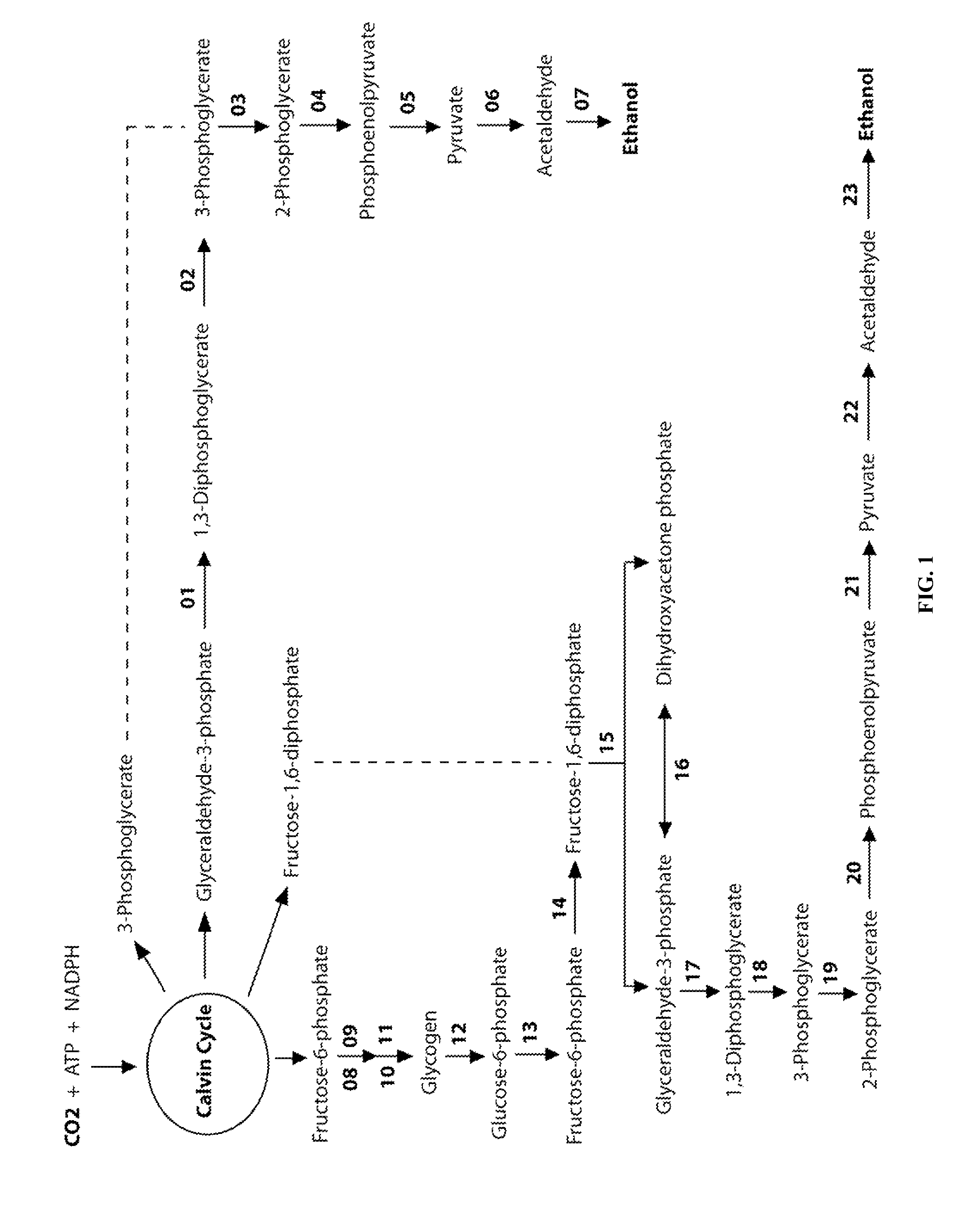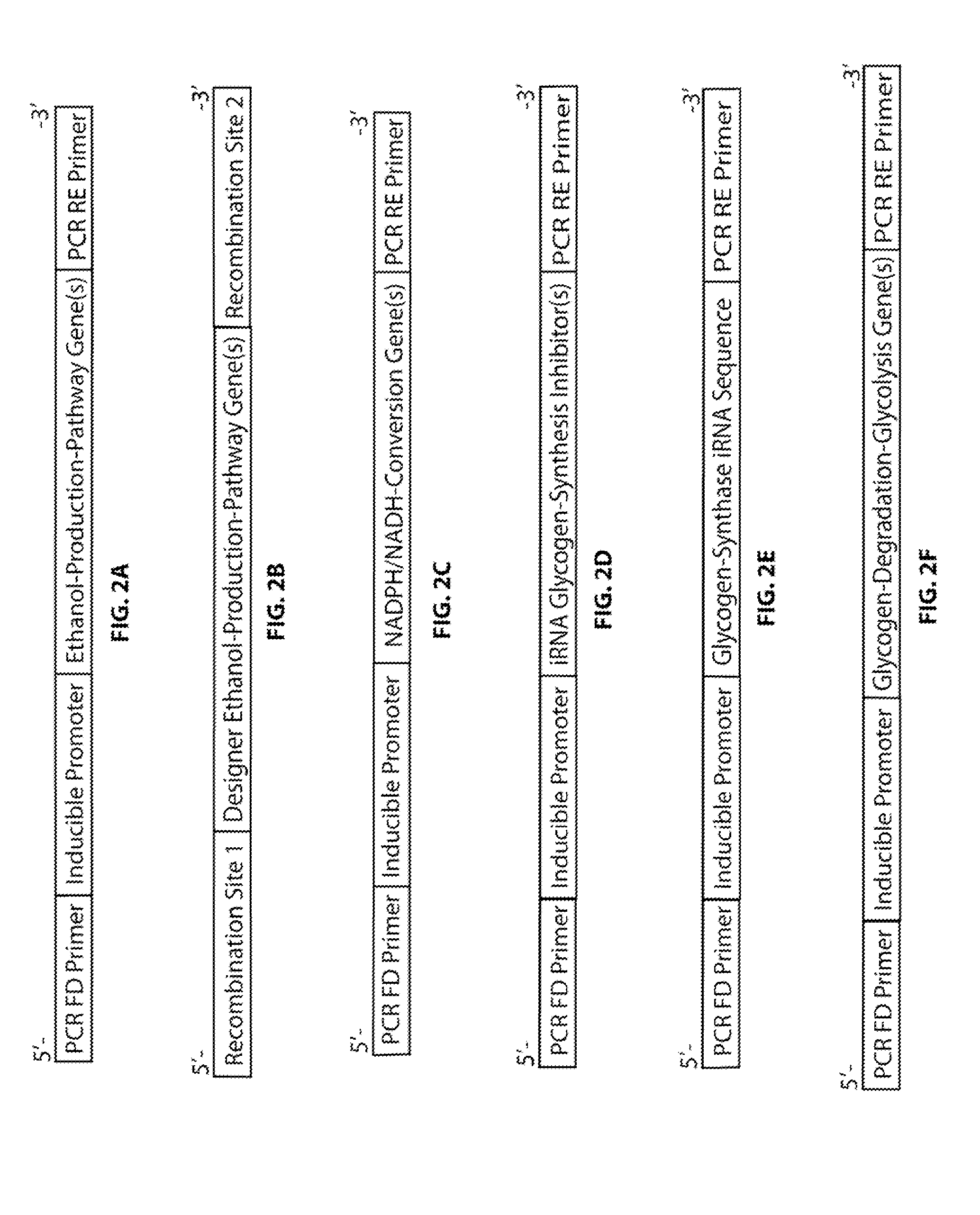Designer Oxyphotobacteria and greenhouse distillation for photobiological ethanol production from carbon dioxide and water
a technology of carbon dioxide and water, which is applied in the field of biofuels production technology, can solve the problems of high energy cost roadblocks to cost-effective conversion of lignocellulosic biomass to fermentable sugars, and limited net energy gain of cornstarch ethanol production process, etc., and achieves convenient gas exchange, high quality, and ethanol concentration in distillates.
- Summary
- Abstract
- Description
- Claims
- Application Information
AI Technical Summary
Benefits of technology
Problems solved by technology
Method used
Image
Examples
Embodiment Construction
[0050]The present invention is directed to a photobiological ethanol production and harvesting technology based on designer transgenic oxyphotobacteria and greenhouse distillations. The designer oxyphotobacteria are created using genetic engineering techniques such that the endogenous photosynthesis regulation mechanism is tamed, and the reducing power (NADPH) and energy (ATP) acquired from the photosynthetic water splitting and proton gradient-coupled electron transport process can be used for immediate synthesis of ethanol (CH3CH2OH) directly from carbon dioxide (CO2) and water (H2O) according to the following process reaction:
2CO2+3H2O→CH3CH2OH+3O2 [2]
The oxyphotobacterial ethanol-production methods of the present invention completely eliminate the problem of recalcitrant lignocellulosics by bypassing the bottleneck problem of the biomass technology. As shown in FIG. 1, the photobiological process in a designer oxyphotobacterium such as designer cyanobacterium effectively uses t...
PUM
| Property | Measurement | Unit |
|---|---|---|
| temperature | aaaaa | aaaaa |
| wavelength | aaaaa | aaaaa |
| heat- | aaaaa | aaaaa |
Abstract
Description
Claims
Application Information
 Login to View More
Login to View More - R&D
- Intellectual Property
- Life Sciences
- Materials
- Tech Scout
- Unparalleled Data Quality
- Higher Quality Content
- 60% Fewer Hallucinations
Browse by: Latest US Patents, China's latest patents, Technical Efficacy Thesaurus, Application Domain, Technology Topic, Popular Technical Reports.
© 2025 PatSnap. All rights reserved.Legal|Privacy policy|Modern Slavery Act Transparency Statement|Sitemap|About US| Contact US: help@patsnap.com



